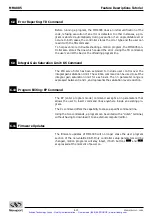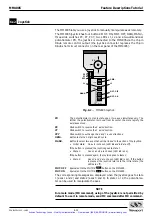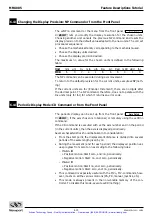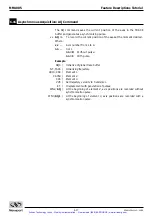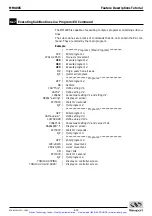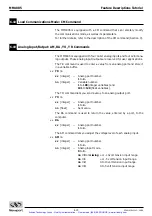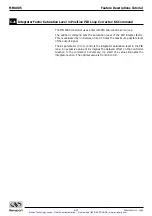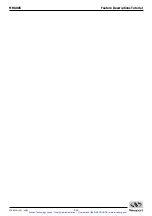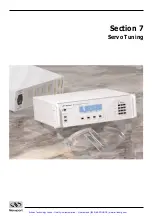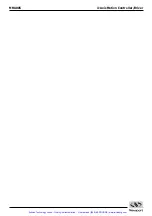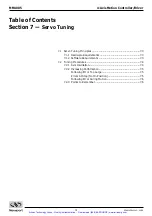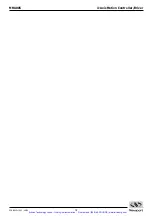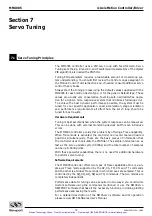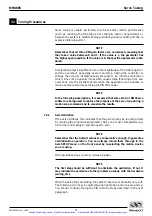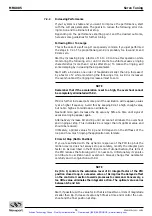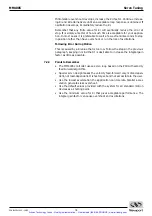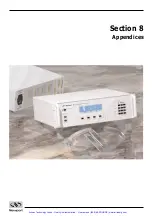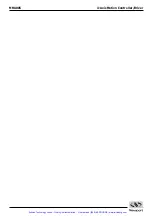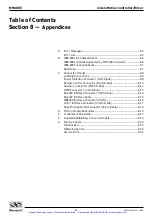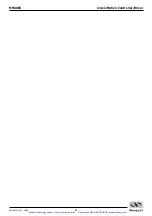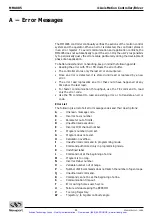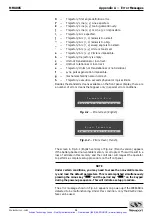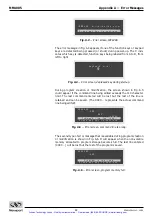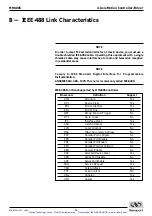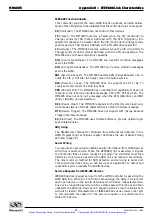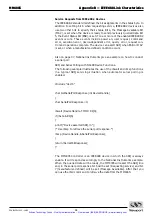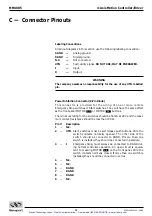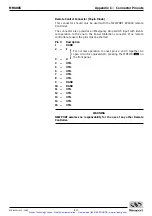
7.3
EDH0162En1040 – 06/99
MM4005
4-Axis Motion Controller/Driver
Section 7
Servo Tuning
Servo Tuning Principles
The MM4005 controller uses a PID servo loop with feed forward. Servo
Tuning sets the Kp, Ki and Kd, and Feed-Forward parameters of the digital
PID algorithm, also called the PID filter.
Tuning PID parameters requires a reasonable amount of closed-loop sys-
tem understanding. You should first review the Control Loops paragraph in
the Motion Control Tutorial Section and, if needed, consult additional servo
control theory books.
Always start the tuning process using the default values supplied with the
MM4005 for each motion device type, or for the generic Default type. These
values are usually very conservative, favoring safe, oscillation-free opera-
tion for a tighter, more responsive system that minimizes following error.
To achieve the best dynamic performance possible, the system must be
tuned for your specific application. Load, acceleration, stage orientation
and performance requirements all affect how the servo loop should be
tuned for best results.
7.1.1
Hardware Requirements
Tuning is best accomplished when the system response can be measured.
This can be done with external monitoring devices but this can introduce
errors.
The MM4005 controller avoids this problem by offering a Trace capability.
When Trace mode is activated, the controller can record real and desired
positions simultaneously. These are the basic pieces of information that
the controller uses to calculate the PID filter. The sample interval can be as
fast as the servo update cycle (0.0005s) and the total number of samples
can be up to 4000 points.
With these powerful capabilities, there is no need for additional hardware
to perform servo tuning.
7.1.2
Software Requirements
The MM4005 controller offers two types of trace capabilities. One is a sin-
gle axis Trace mode supported by the SP, XS, TM, XN and TT commands
and the other is a Global Trace mode in which all axes are sampled. This is
controlled by the SQ, XQ, GQ, NQ and TQ commands. The two modes are
completely independent.
Performance data for tuning can be acquired in two ways: you could write
custom software using the commands mentioned or use the NMCServo
NEWPORT software that has all the necessary functions, including plotting
performance and saving the results.
For a detailed description of the NMCServo software and its operation
please review NMC Softwares User’s Manual.
7.1
Artisan Technology Group - Quality Instrumentation ... Guaranteed | (888) 88-SOURCE | www.artisantg.com

